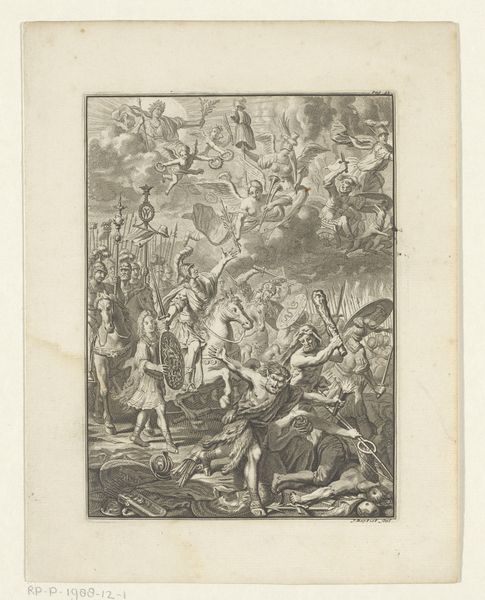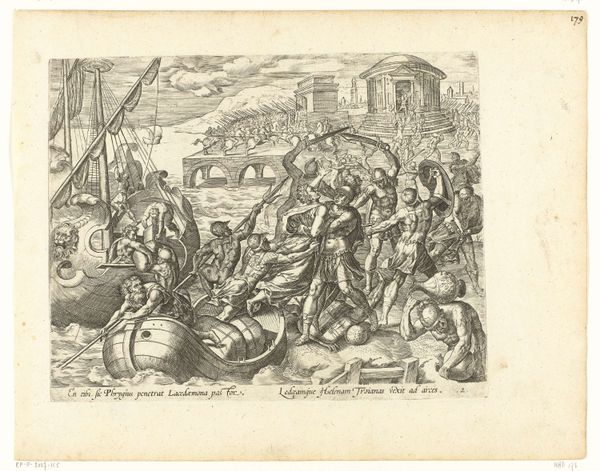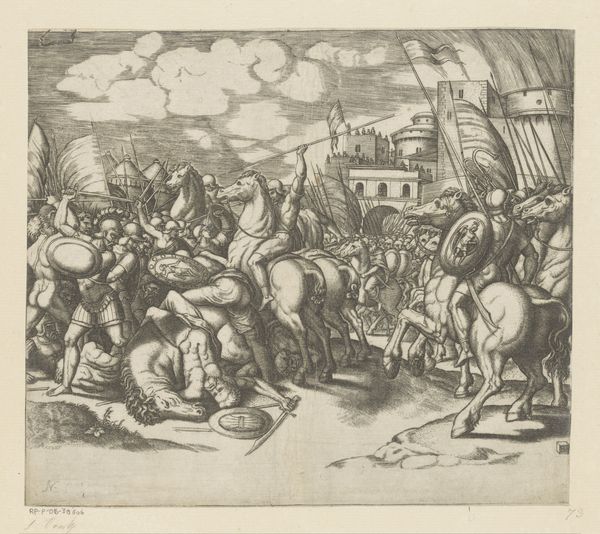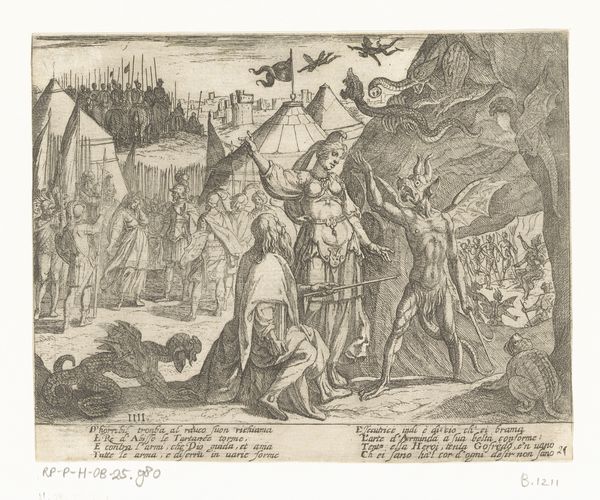
print, engraving
#
narrative-art
#
baroque
# print
#
pen sketch
#
pencil sketch
#
old engraving style
#
history-painting
#
engraving
#
realism
Dimensions: height 194 mm, width 154 mm
Copyright: Rijks Museum: Open Domain
Curator: This engraving from 1676, titled "Tot slaaf gemaakte Bengalezen aan de Nederlanders verkocht"—"enslaved Bengalis sold to the Dutch,"—offers a stark vision of the colonial era. The name of the artist is unknown, although the lower right states “Uit W. Schouten 1676” Editor: My immediate response is discomfort. The stark lines and the composition depicting such disparity create a really unsettling feeling. You see the crisp details etched into the metal, and the image itself is a testament to the mechanical reproduction of violence and subjugation. Curator: Indeed. As a print, likely disseminated widely, this image played a role in shaping perceptions of colonialism and the slave trade. Consider the material properties—the paper, the ink, the very act of replication—all contributing to the circulation of this narrative. This would have involved the labour of numerous printers. How many copies were circulated? What was the production cost for the artist? Editor: It's also important to unpack whose narrative it is. The European gaze dominates. Where are the voices and perspectives of the Bengalis being sold? The composition literally and figuratively positions them as commodities. The Dutch stand erect, their figures illuminated, while the enslaved people cower, hunched over and darkened. The racial hierarchies of the era are vividly rendered. Curator: Let’s look closely at the foreground and background of the image itself. Note the architectural structures and palm trees in contrast with ships and burning buildings. I wonder about the choice to use such visual tools to reinforce cultural identities and difference. What does that labor of contrasting actually reveal, then? Editor: That contrast highlights the upheaval and violence inherent in colonialism. Those ships weren’t merely vessels of trade; they were instruments of invasion and enslavement. The flames on the horizon aren't simply decorative; they are emblems of destruction, of lives and communities uprooted. It pushes us to investigate not only the exchange of enslaved people, but the total disruptions to Bengali economy, environment, and culture that enable it. Curator: Ultimately, for me, it pushes back on what the labour put into print-making can do or should do; not all image-making should be elevated. Editor: It’s a brutal visual reminder of a history that continues to shape our present, prompting us to reflect on the ongoing legacies of colonialism and the urgent need to amplify marginalized voices.
Comments
No comments
Be the first to comment and join the conversation on the ultimate creative platform.













